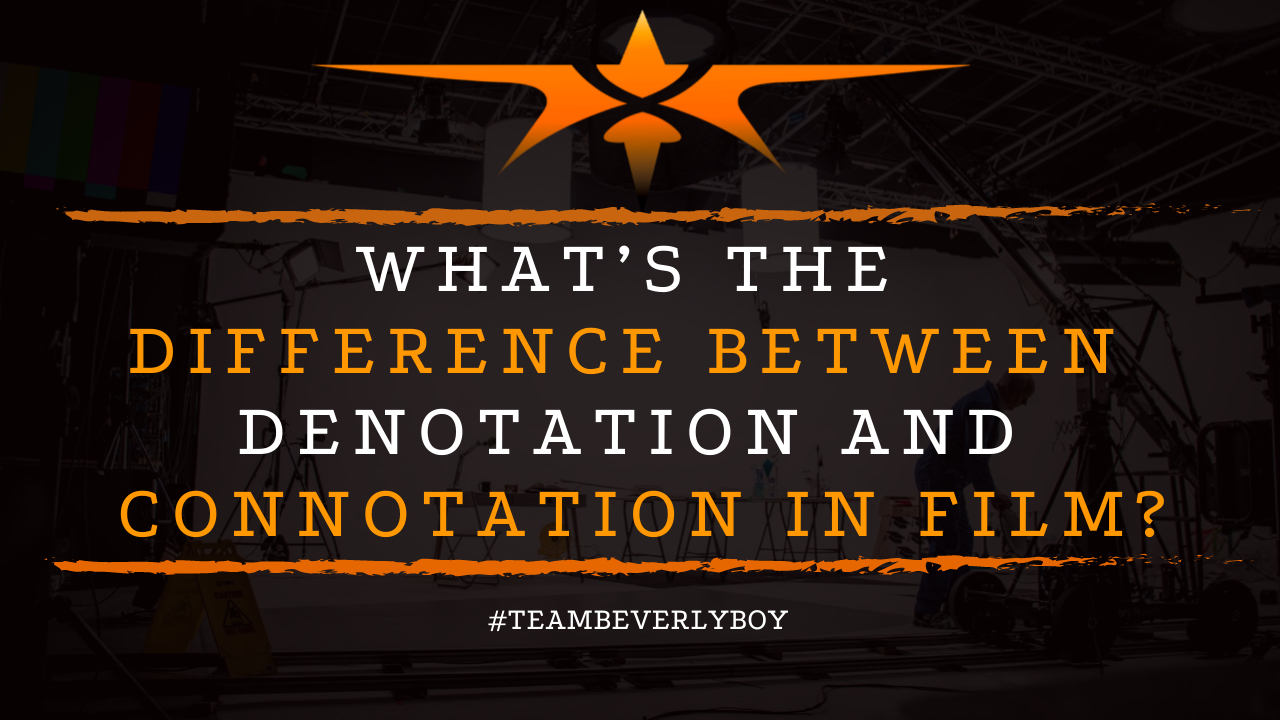
What’s the Difference Between Denotation and Connotation in Film?
Films do an excellent job of communicating messages and meaning to audiences both denotatively and connotatively. Audiences tend to see and hear things denotatively while they experience immersive sounds and particular images in a connotative manner. To someone that’s new to film theory and the study of various cinematic premises and ideas. It can be difficult to understand the difference between denotation and connotation in film.

What do these terms mean and how are they different from one another?
What is Denotation in Film?
In films, denotation is essentially what you can see in the film. Thus, it’s the images and their exact meaning without any underlying message or mixed emotion attached.
What you see is what it is, and what you hear is exactly what it is. The audience does not struggle or strive to understand or recognize denotation. Sounds and images appear exactly as they are.
Essentially, denotation is the textbook definition of the term, color, sound or other element of a film. There is no underlying meaning, message, or intent.
What is Connotation in Film?
Connotation in film represents the way that a scene, image, or sound in film makes the viewer feel. This is the underlying message or emotion that is created by the film.
Connotation is an intellectual or emotional interpretation of the term, color, sound, or other element of a film. Connotation is how you interpret what you see or hear rather than how you actually see it or what exactly you see.
Difference Between Denotation and Connotation in Film
In the simplest form of explanation, when it comes to the difference between denotation and connotation in film it can be largely stated that denotation represents the literal meaning of a film whereas connotation represents the underlying messages or feelings that a film causes.
Basically, denotation is a what you see is what you get, it is what it is and there is no underlying message whereas connotation is more of a what you see isn’t always about what you see.
It is also about how it makes you feel and what the message is behind the particular image, action, or element.
Let’s take a look at how denotation and connotation in film can have different meanings in some examples:
- The color blue in a film. Denotation would simply be – blue is a color. Connotation would be – blue makes us feel sad.
- If a film were to use red shoes. Denotation would be – those are red shoes. Connotation would be – the red shoes are representative of a fairy tale and were made for dancing.
- A glass slipper in a film. Denotation would be – there is a glass, potentially breakable, slipper. Connotation would be – that slipper signifies romance and a happily ever after.
In Summation
As you can see, the difference between denotation and connotation in film is that denotation represents a what you see is what you get mindset in which exactly what the audience sees on the screen or hears happening is precisely, textbook definition whatever they see or hear.
Whereas connotation represents an underlying meaning or message behind the visuals and sounds. Filmmakers use connotation to deliver powerful messages, to stir up emotions and to evoke various mindsets from the audience.


